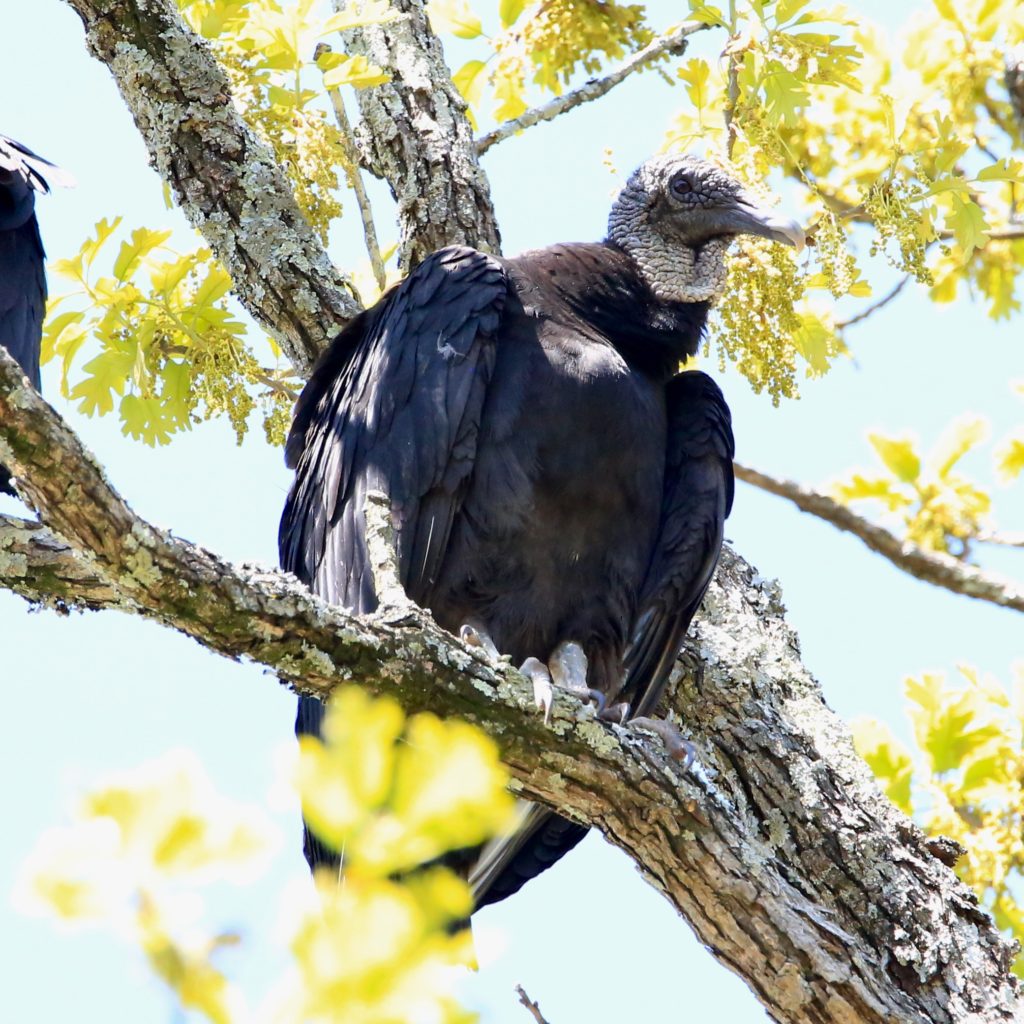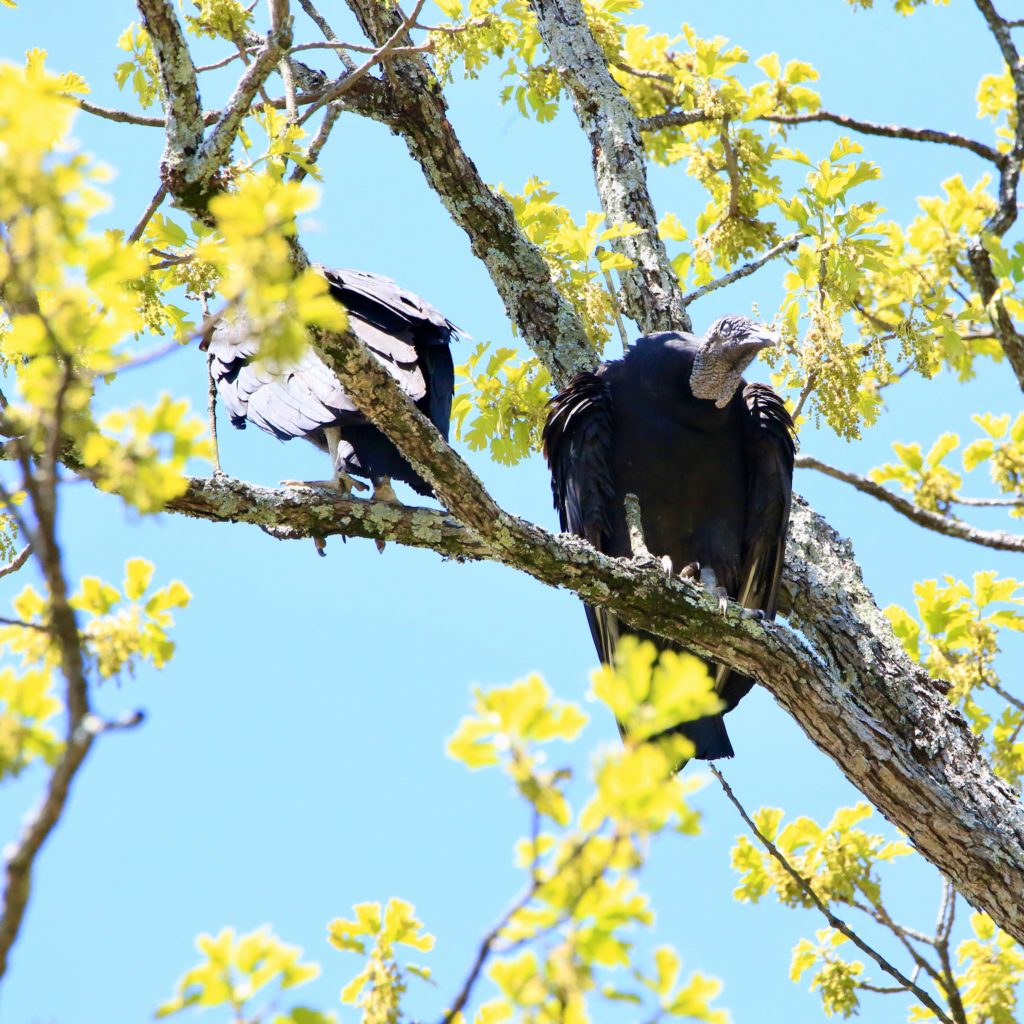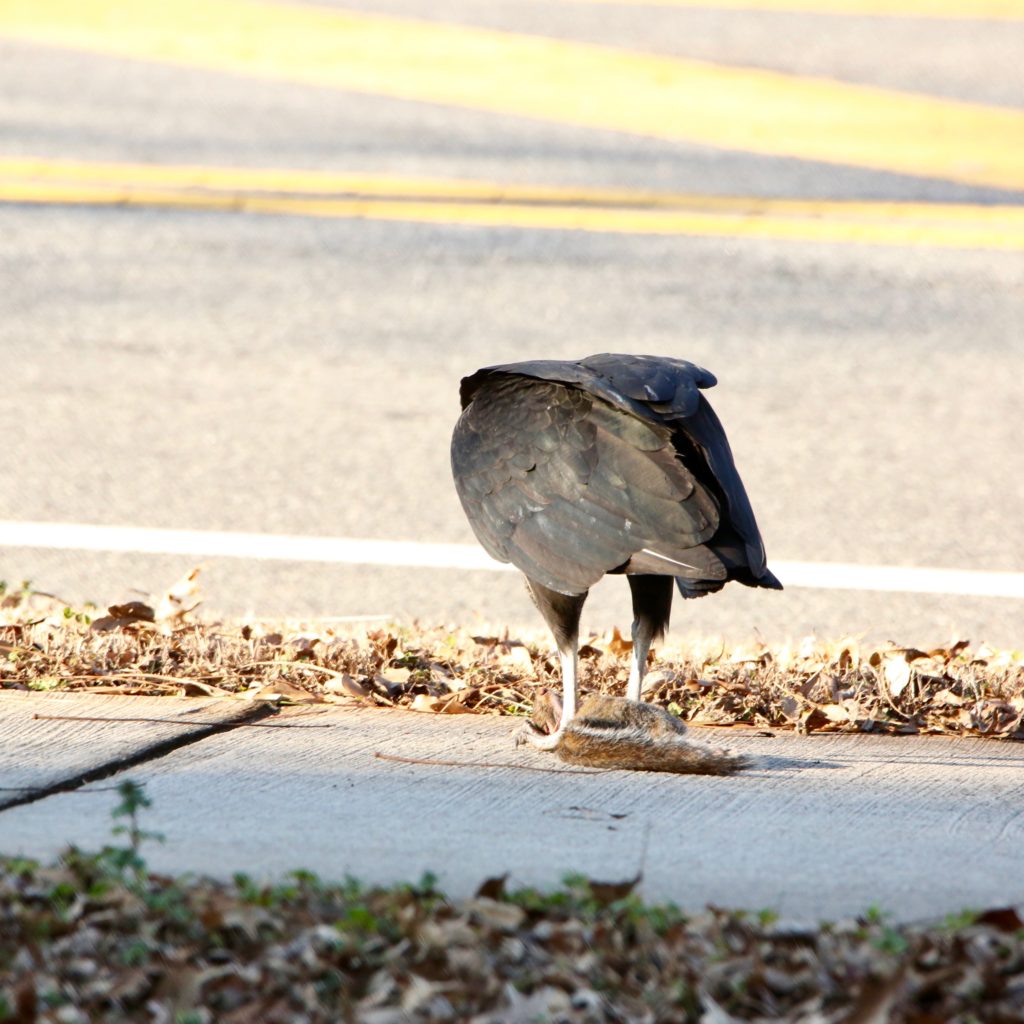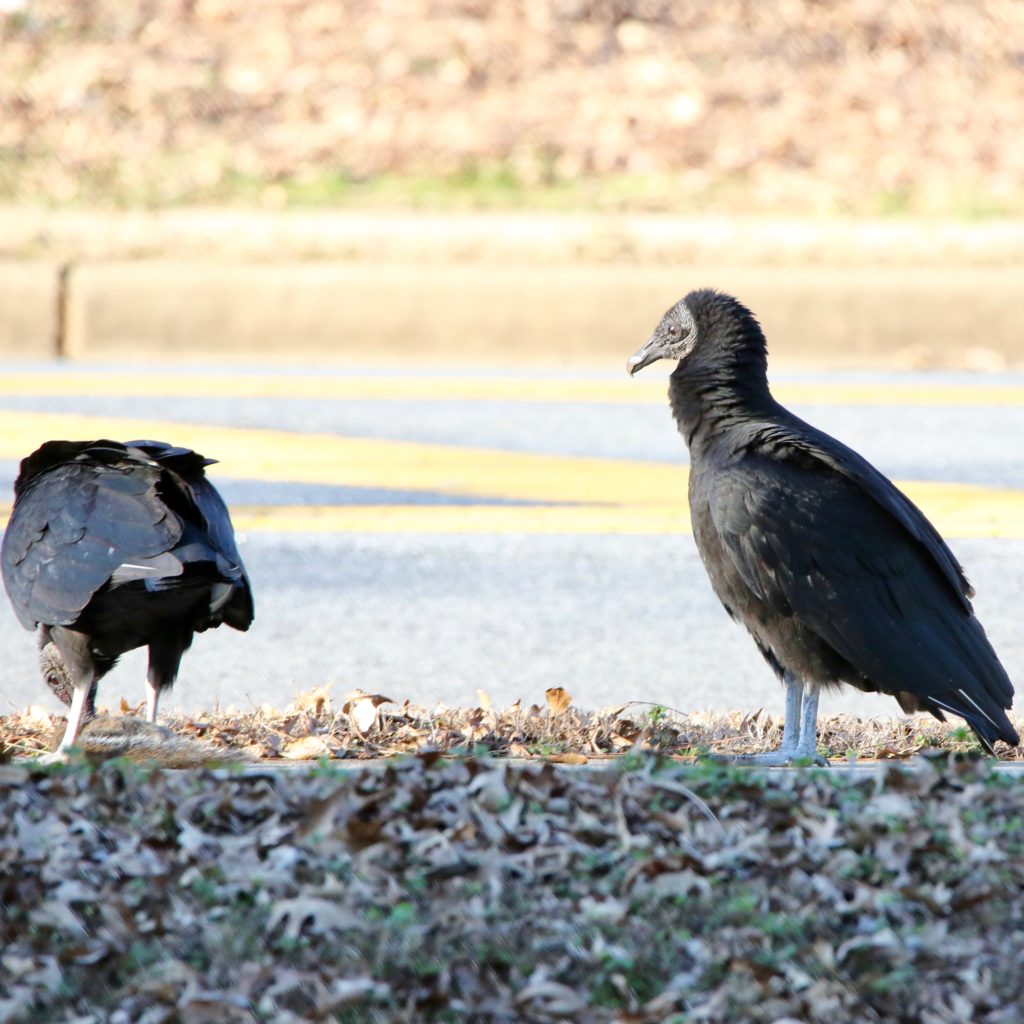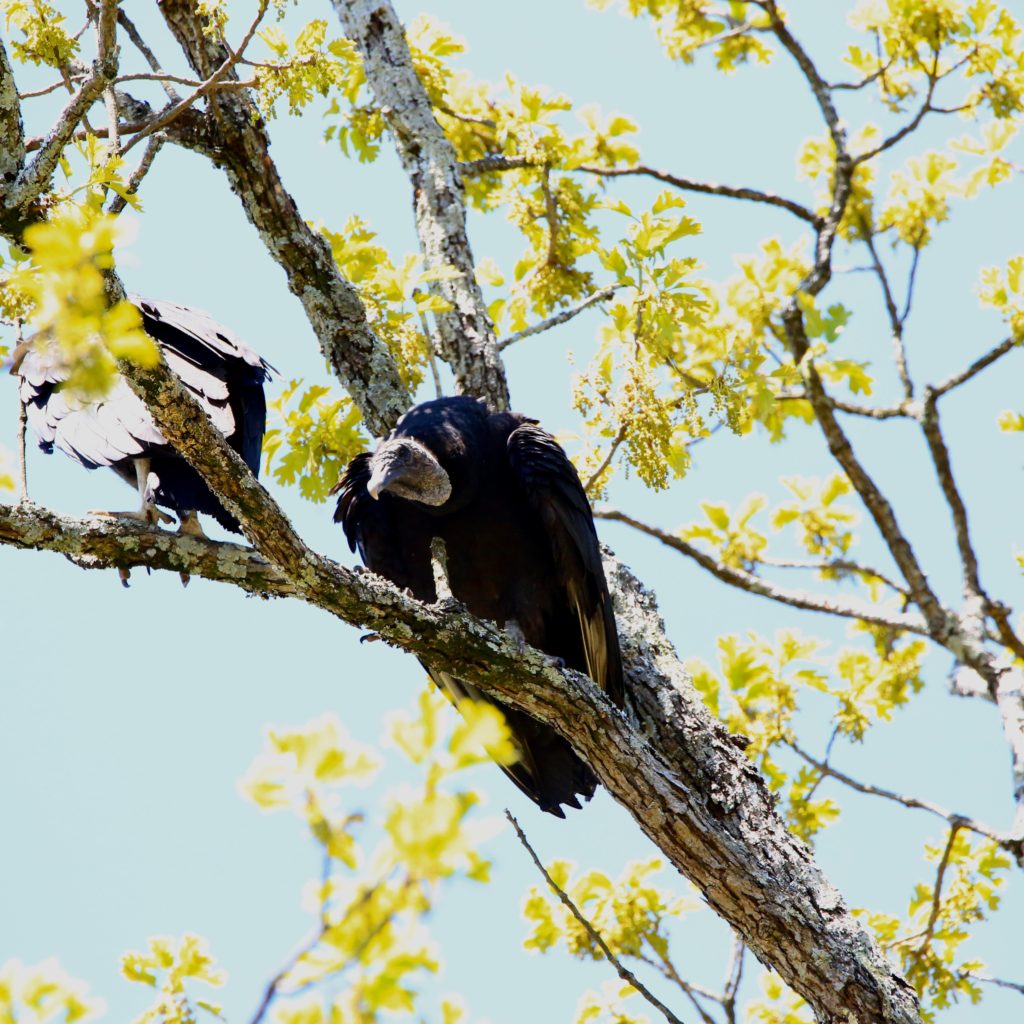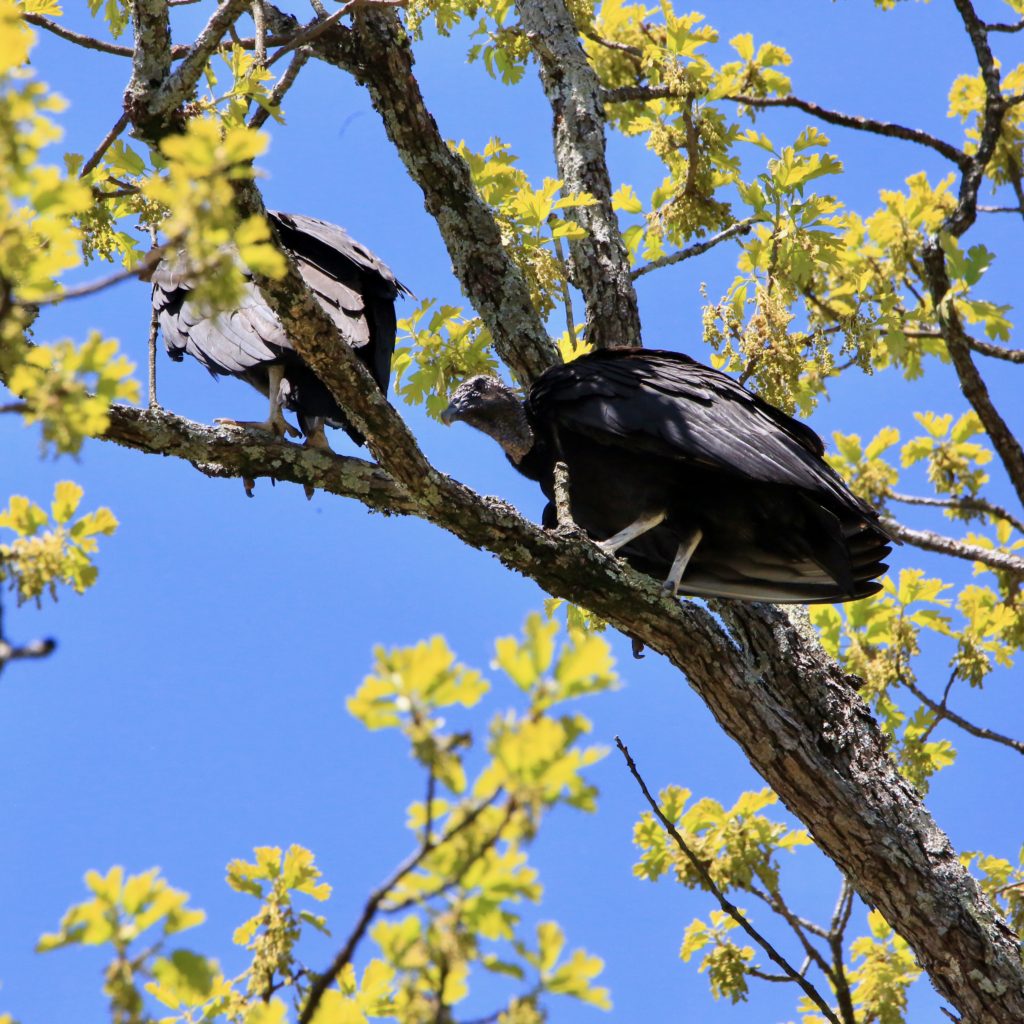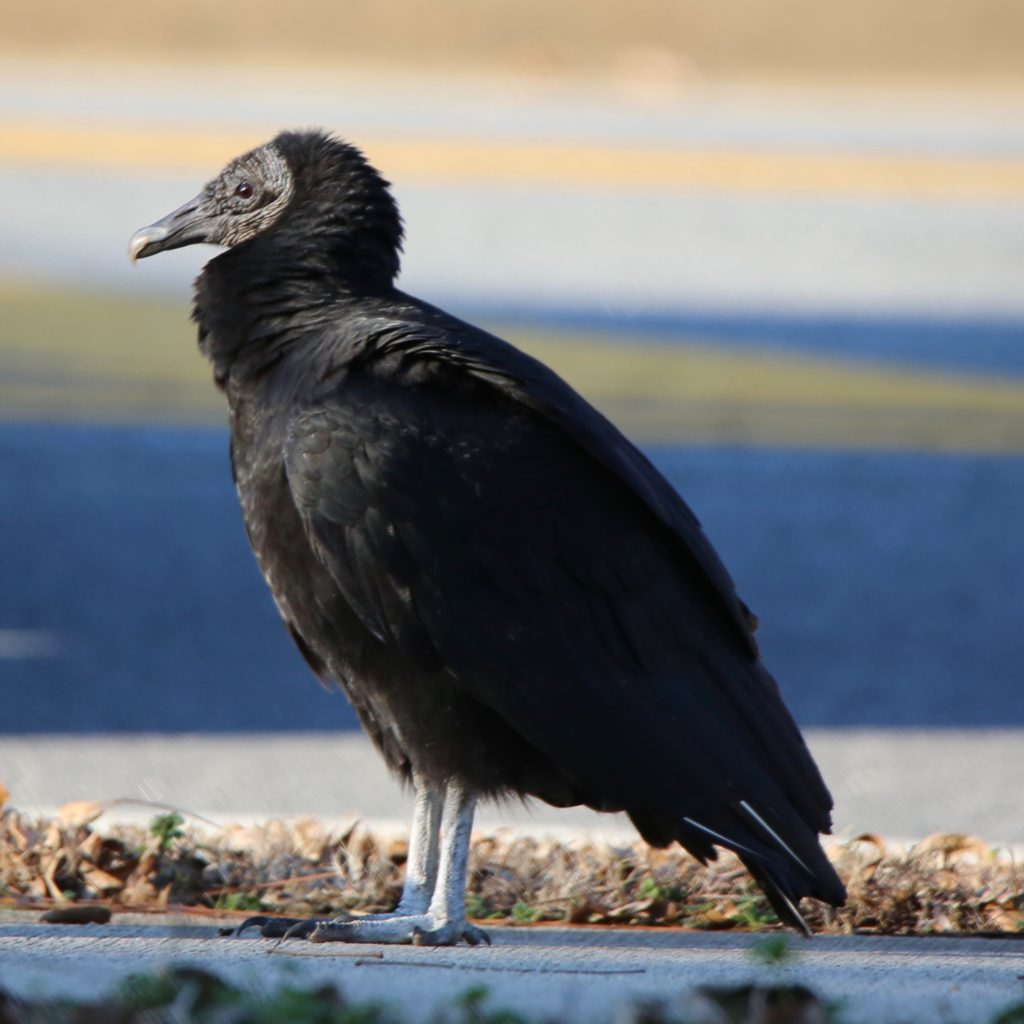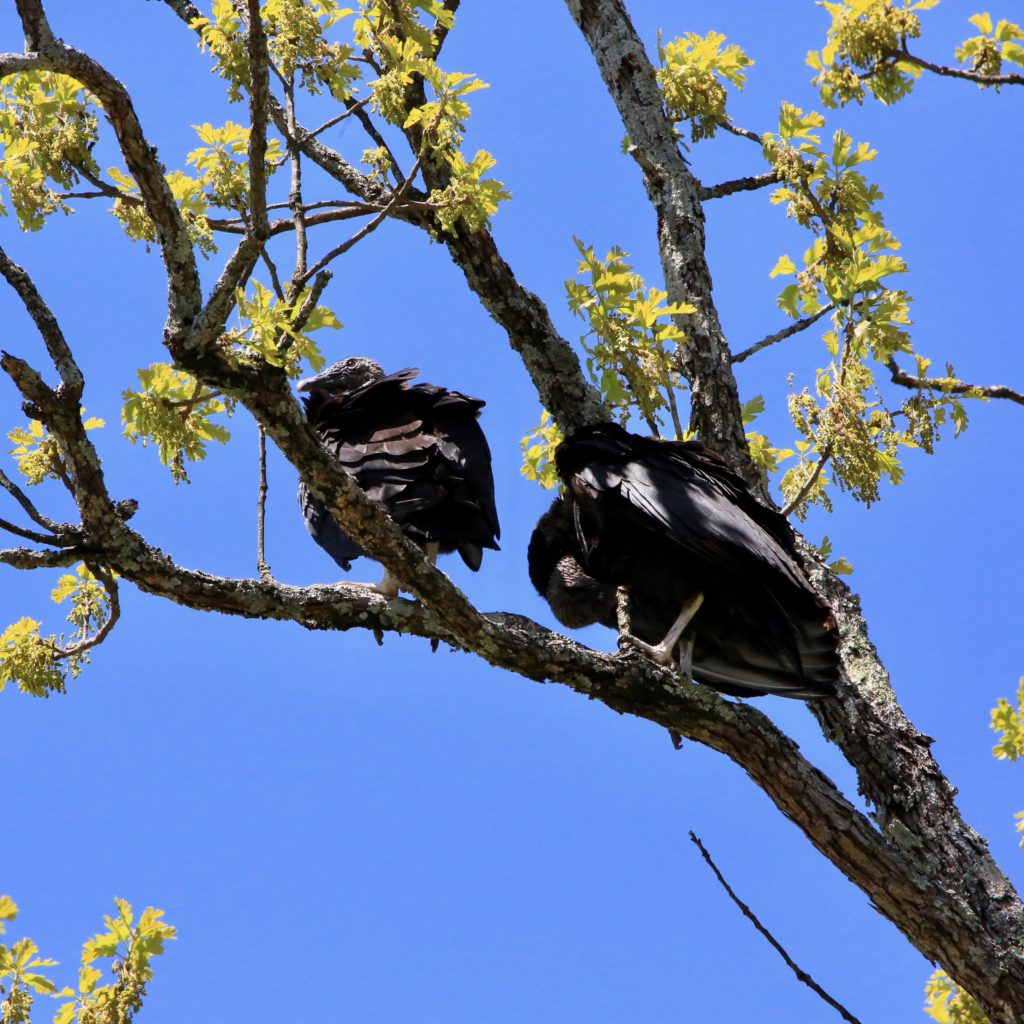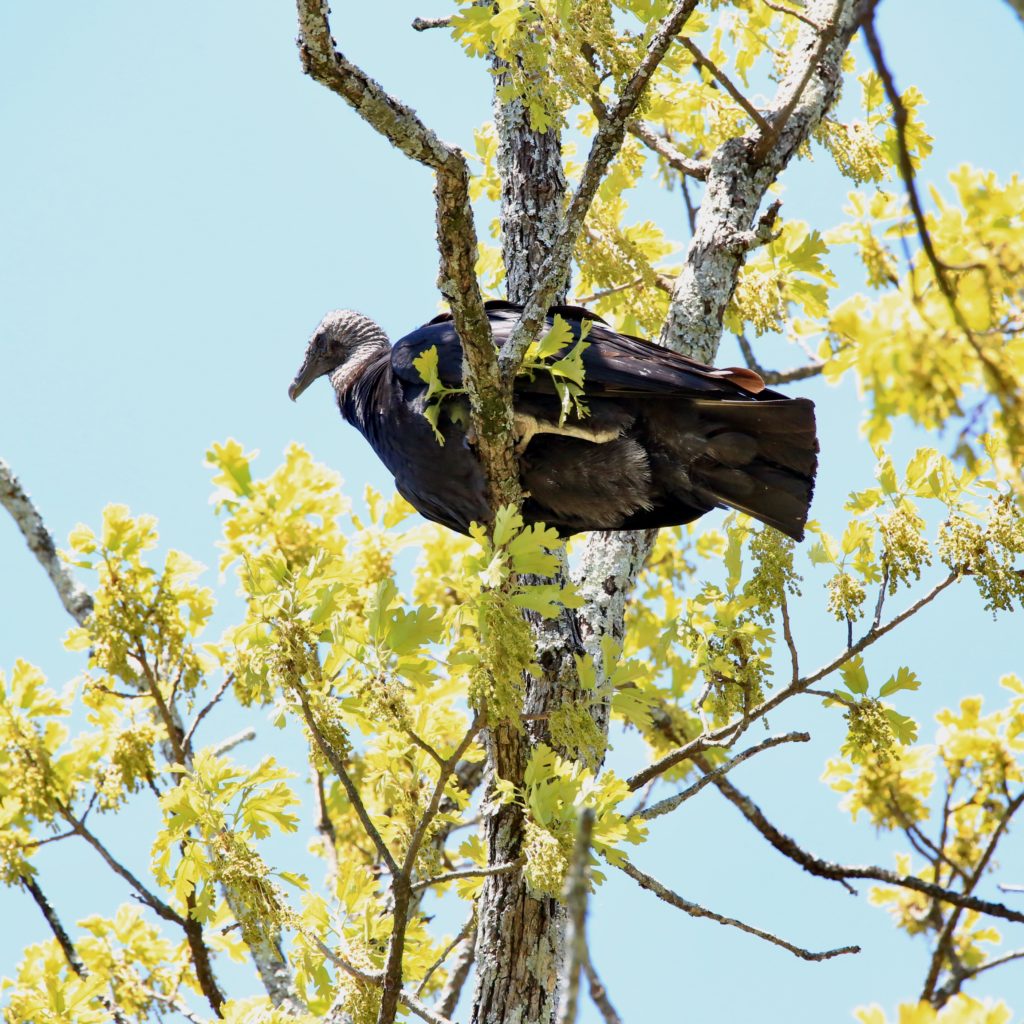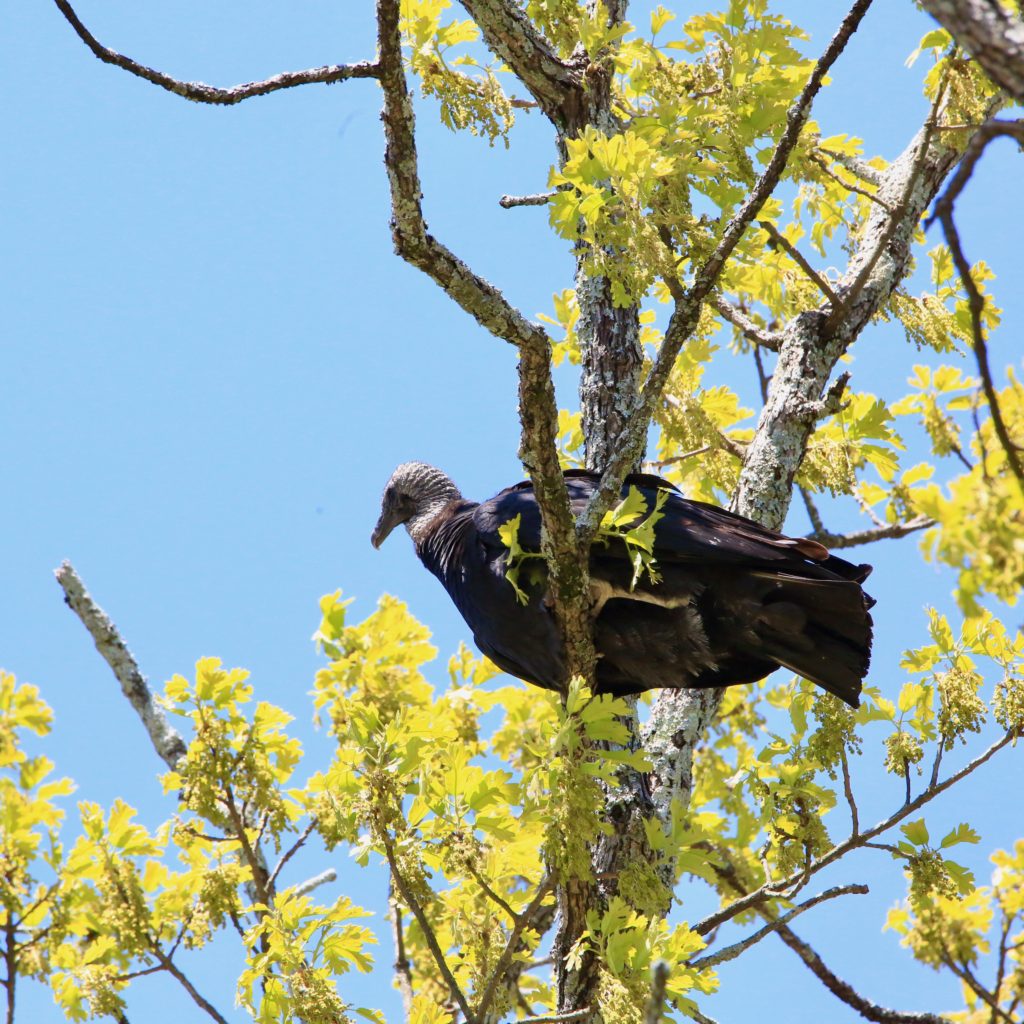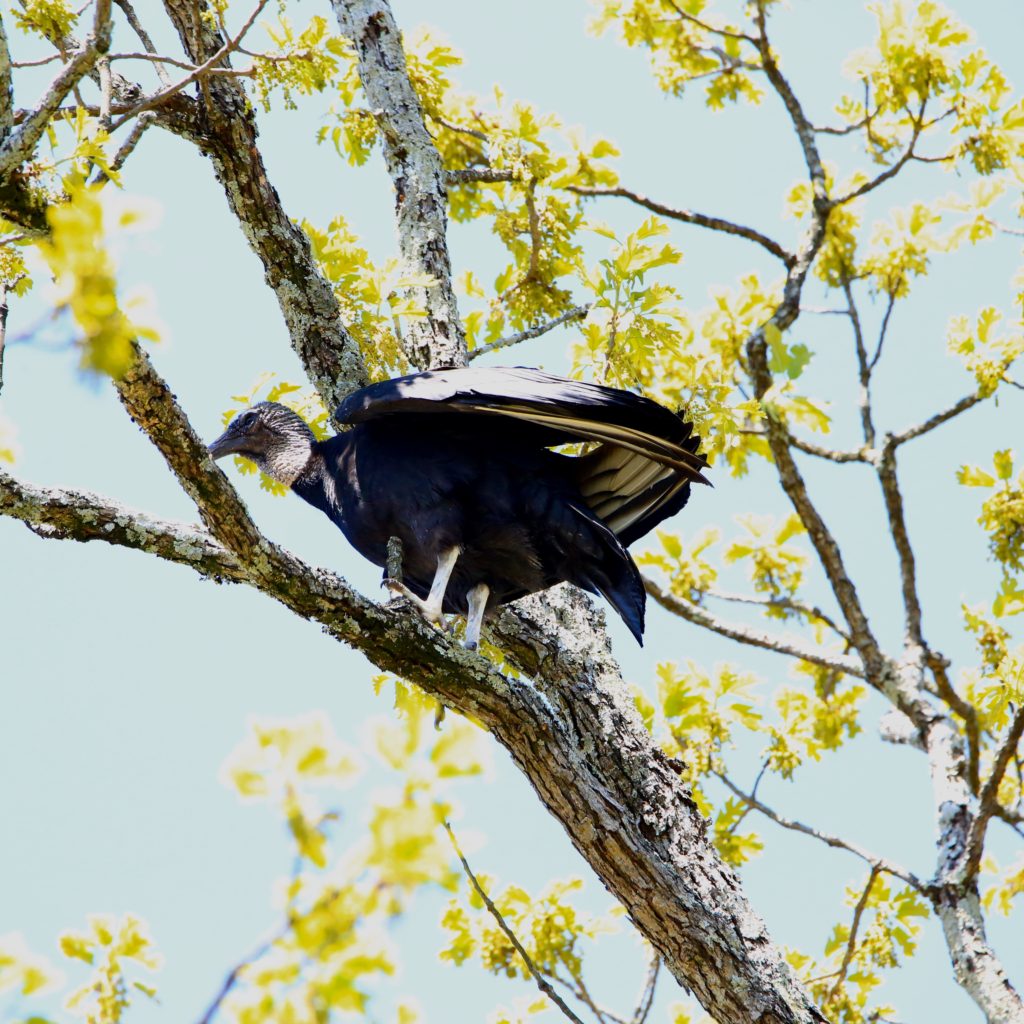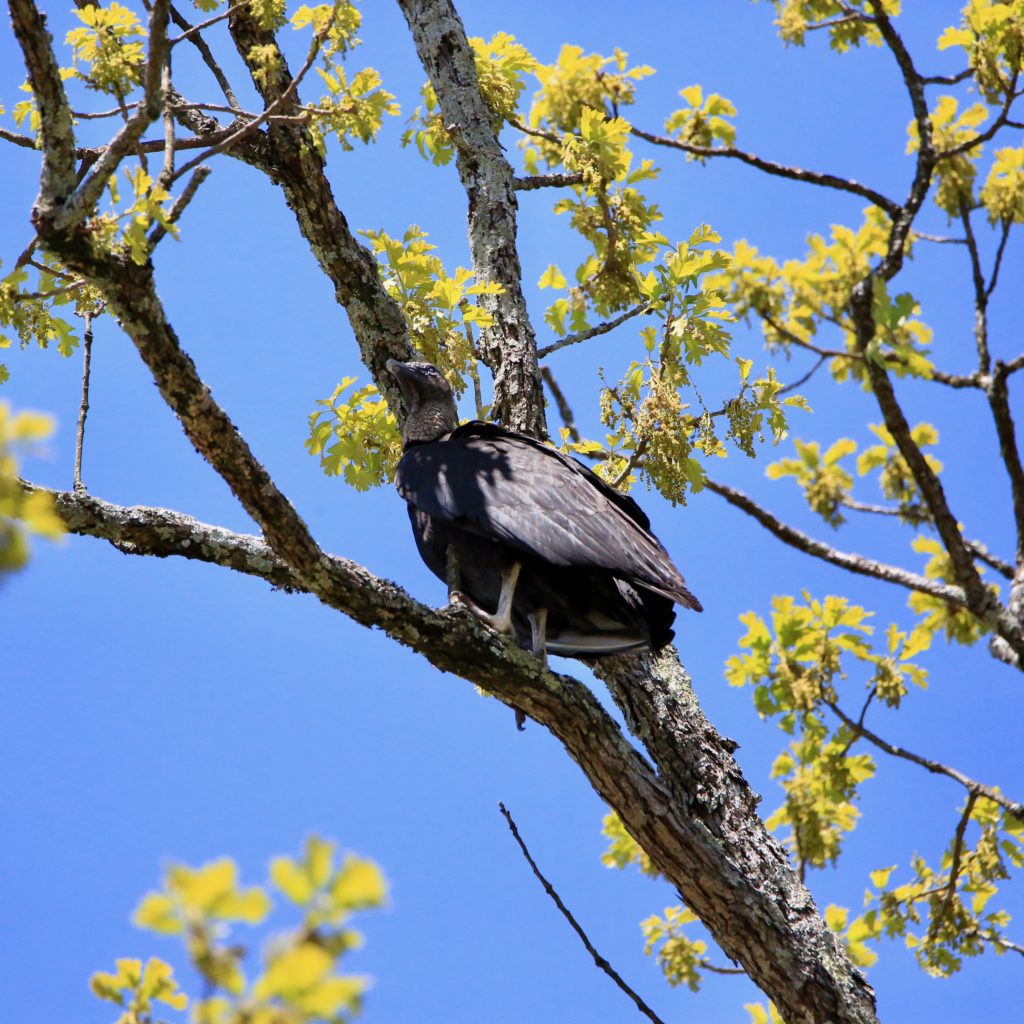
Black Vulture
A Black Vulture is a fun bird to see while bird watching. Below are some tips to help you identify Black Vultures. We have also put together a list of fun Black Vulture t-shirts, Black Vulture bird patches, bird houses, bird feeders, binoculars, stickers and other fun bird watching items.
About Black Vultures
The Black Vulture is native to central and South America. It rarely moves over long distances due to severe weather conditions. In the US, it lives in the southeast.
Description and Identification
These vultures have a strikingly glossy black body, giving them a solemn appearance. They have bare heads and necks that are dark grey and wrinkled. The bases of their broad and short wings are primarily white, giving them a white appearance from below when they are flying. Their tail is extremely short. Their talons are not strong, making their grasp relatively weak. Their greyish-white legs have two front toes that are long and have webbings. Their eyes have brown irises, a single row of eyelashes on the upper lid and two small rows on the lower lid.
Black Vulture Size
The Black Vulture has an average wingspan of 155 cm and weighs around 5 pounds.This bird species has an average length of 60 to 75 cm. the tail measures around 25 cm.
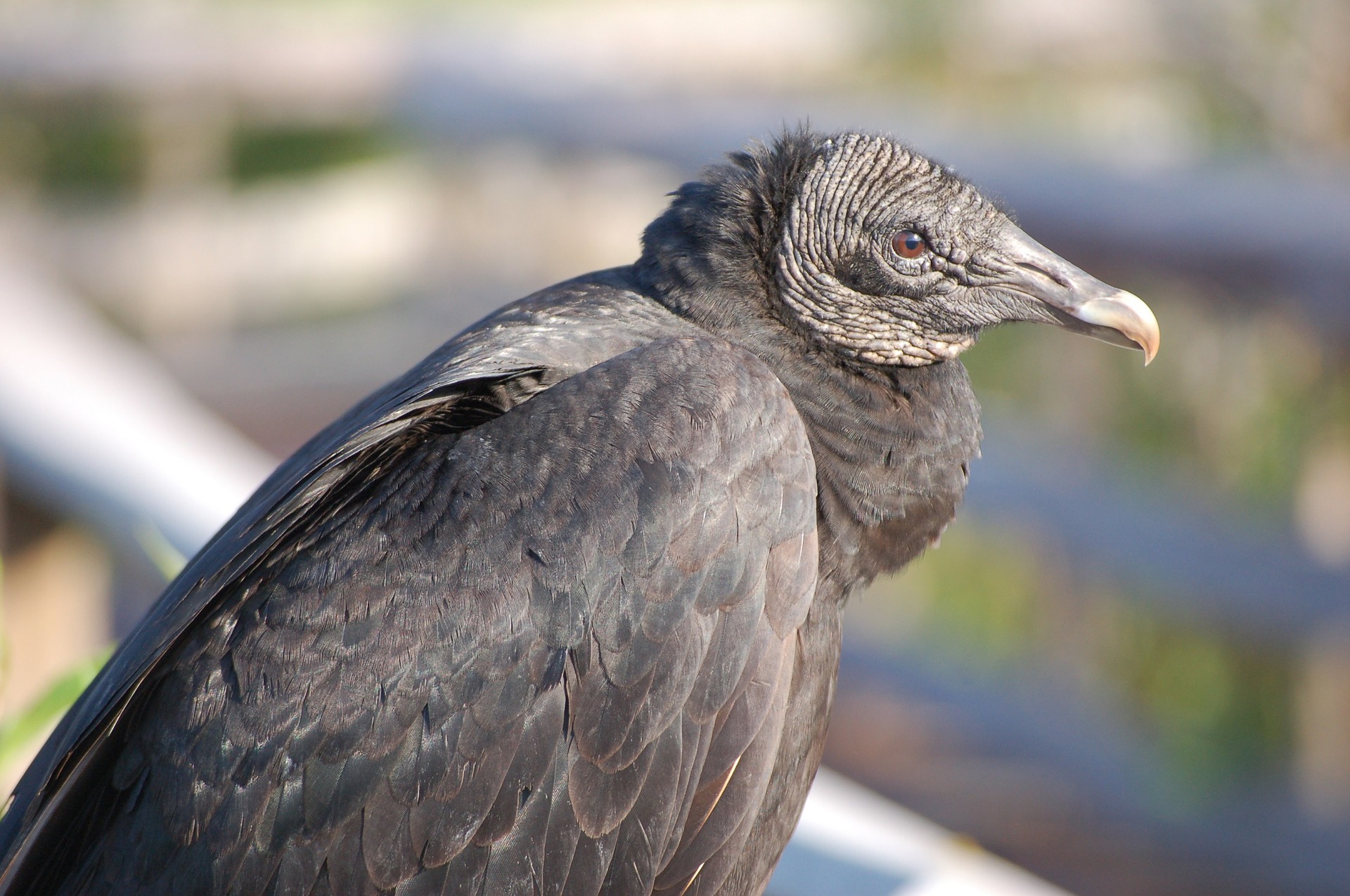
Black Vulture Color Pattern
These birds have grayish bare heads and black feathers. They have a similar appearance to eagles. They fly with their wing fully stretched out and flattened. During the flight, a patch of the underwings can be seen from beneath. The birds have greyish white legs that are webbed at the toes.
Where Black Vultures Live and Their Habitat
The Black Vulture is fond of the open country. It avoids higher mountains and can be found in flat and coastal plains. Black vultures roost and nest in the forest. They prefer open land interspersed with frequent bushes and woods. They are rarely spotted in mountainous areas and have a clear preference for lowlands. They’re usually found in moist lowland forests, shrublands, grasslands, wetlands, swamps, pastures, and heavily degraded former forests. They soar high when searching for food, holding their wings steady horizontally as they glide. They have few vocal abilities, making them harder to spot, although they are often perched up on fence posts or dead trees.
Range and Migration
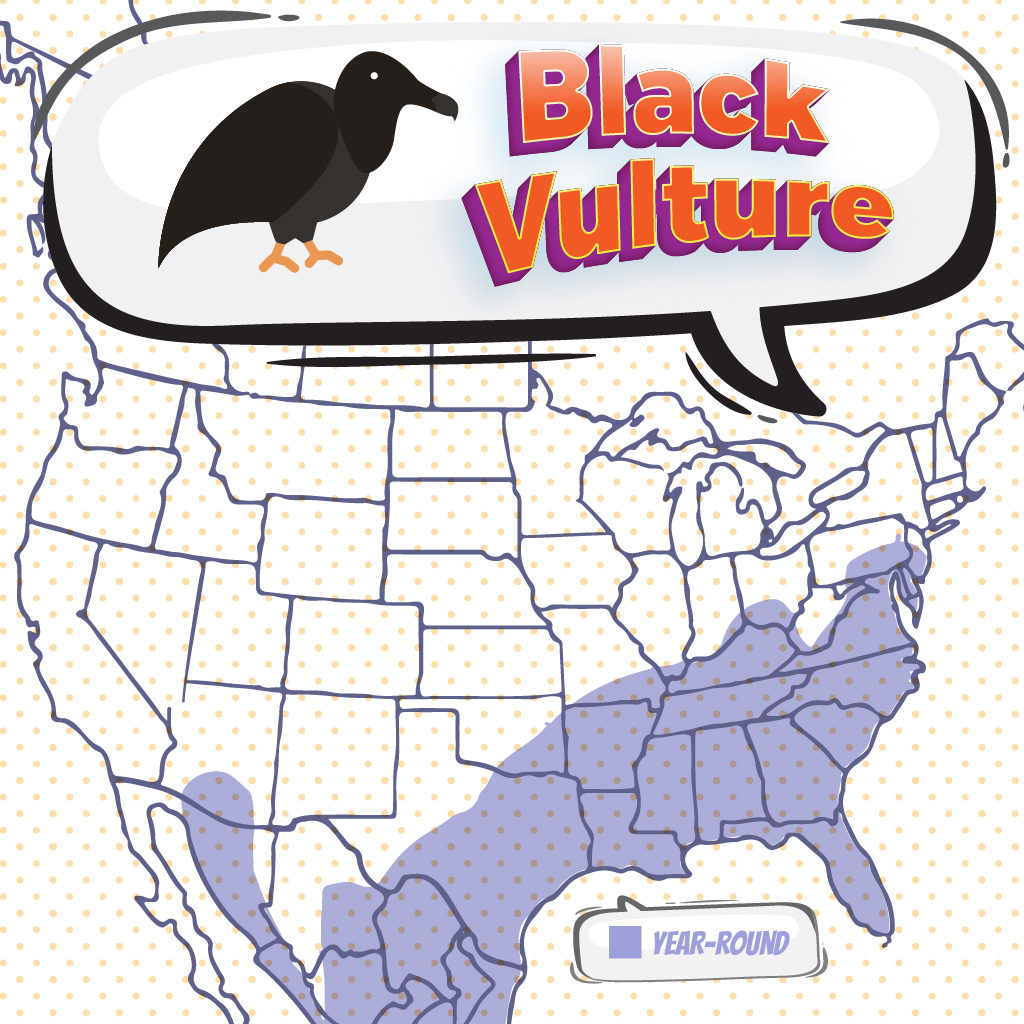
The range of Black Vultures ranges from The Northeastern United States to Peru, Central Chile, and Uruguay in South America. These birds are mostly sedentary, although some birds in the northern regions of their range might temporarily relocate during colder months. They migrate in flocks that may be as small as a few individual birds, or as large as several dozen birds. Like other soaring migrants, they are hesitant about crossing water bodies. Over the recent years, they have been able to extend their range to Pennsylvania, and Hawk Mountain is well known for its abundance in Black Vultures.
What Black Vulture Eat and Their Food
As scavengers, Black Vultures primarily feed on carrions, but they might also eat eggs and newborns of other birds. In modern spaces, they dig through human garbage looking for meat and other food items. They play an important role in the ecosystem as they feed on carriers that are potentially disease-carrying. They locate food by sight, and by following other vultures with similar food preferences. They also use their sense of smell to locate carcasses under cover of the forest canopy. Occasionally, they may feed on deer or livestock. While feeding, they become extremely aggressive. Like with other scavengers, Black Vultures are resistant to pathogenic microorganisms and the toxins in carrions.
Black Vultures mainly feed on carcasses of dead animals. They will also feed on eggs of other birds and animals such as turtles and lizards. They have a predatory instinct and may choose to kill and eat the young of some birds and sea turtles. In cases of extreme hunger black vultures have been known to eat newborns of large mammals. The birds also eat some plants such as coconuts and rotting vegetables. These birds are also known to scavenge garbage from dumps.
Nesting
Black Vulture nesting and breeding activities vary based on their latitudinal position. Courtship rituals take place on the ground, during which several males surround a single female, often chasing and diving in after each other to increase their own attractiveness. They seldom lay their eggs more than 3m above the ground. They are laid in hollow cavities or wooded areas in nests that are built with brightly coloured plastic, shards of glass, and metal items such as bottle caps. Black Vultures typically lay between one and three eggs in each clutch, and both sexes incubate the eggs. The younglings remain in their parents’ nests for two months after hatching, during which their parents feed them by regurgitating food.
Black Vulture Lifecycle
When it comes to the breeding season, both sexes may spiral high in the air as a form of courtship. The male black vulture will often circle the female with its neck elongated. It will also make hissing sounds in order to get the attention of the female.
These birds nest on the ground and don’t build nests. The female Black Vulture usually lays two eggs rarely three. They are pale gray/green and incubation is by both sexes. Both parents feed young for several months.
Ornithology
Bird Watching Academy & Camp Subscription Boxes
At Bird Watching Academy & Camp we help kids, youth, and adults get excited and involved in bird watching. We have several monthly subscription boxes that you can subscribe to. Our monthly subscription boxes help kids, youth, and adults learn about birds, bird watching, and bird conservation.
Bird Watching Binoculars for Identifying Black Vultures
The most common types of bird watching binoculars for viewing Black Vultures are 8×21 binoculars and 10×42 binoculars. Bird Watching Academy & Camp sells really nice 8×21 binoculars and 10×42 binoculars. You can view and purchase them here.
Black Vulture T-shirts
If you love the Black Vulture you should purchase a Bird Watching Academy & Camp T-shirt. To help support bird conservation we donate 10 percent to bird conservation activities.
Black Vulture Iron On Patches
Kids, Youth, and Adults love to collect our Bird Watching Academy & Camp iron on patches. Our bird watching patches help you keep track of the birds you have seen an identified. You can also display the patches on our Bird Watching Academy & Camp banners.
The Black Vulture is a great iron on patch to start your collection with. The patches are durable and can be sewn on or ironed on to just about anything.
Black Vulture Stickers
Stickers are a great way for you to display your love for bird watching and the Black Vulture. We sell a monthly subscription sticker pack. The sticker packs have 12 bird stickers. These sticker packs will help your kids learn new birds every month.
Bird Feeders For Black Vulture
There are many types of bird feeders. Here are our favorite bird feeders for your backyard. We use all of these bird feeders currently. Kids will have a great time watching birds eat at these bird feeders. Using this collection of bird feeders will provide a wide variety and many types of birds.
Best Bird Houses for Black Vulture
There are many types of bird houses. Building a bird house is always fun but can be frustrating. These 4 bird houses have become our favorites. Getting a bird house for kids to watch birds grow is always fun. We spent a little extra money on these bird houses but they have been worth the higher price and look great.






